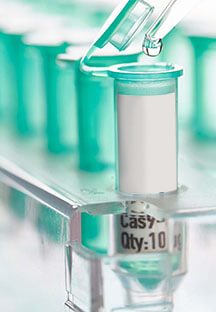
Cervical cancer is one of the most common forms of cancer affecting women. Caused by a viral infection known as human papillomavirus, or HPV, it is the only type of cancer with clear etiology by early diagnosis and can be prevented by vaccination.
Every year, about 200,000 women die from this disease around the globe. In China, the incidence and mortality of cervical cancer rank first among the malignancies of the female reproductive system. In 2015, there were about 100,000 new cases of cervical cancer and about 30,000 deaths in China alone.
Request a Quote for the OHAUS Incubating Waving Shakers
Localization of an HPV Vaccine in China
As international pharmaceutical giants like GlaxoSmithKline and Merck Sharp & Dohme enter the Chinese HPV vaccine market, the country’s domestic enterprises have accelerated the development and production process of an effective HPV vaccine.

Ongoing medical research has led Chinese biopharmaceutical companies to begin developing a series of new recombinant vaccines to address this health issue, including the bivalent HPV vaccine, which has entered clinical phase III. And, with several biotech drug manufacturers already at work, China will likely see a series of products on the market soon addressing the prevention and treatment of cervical cancer, with the first Chinese HPV vaccine expected to enter the market in 2022.
Chinese biopharmaceutical companies and manufacturers are aiming to break the monopoly of the foreign patent medicine market, fill the gap of domestic demand, and provide high-end, high-quality medicine at prices that Chinese patients can afford.
Since October 2017, the Chinese government has encouraged the innovation of pharmaceuticals along this line of cancer treatment. It has also resolved difficult issues involving clinical experiments, supported the development of clinical research institutions, and encouraged innovation of clinical research. Additionally, Chinese government officials have paid much attention to reforming the management of clinical experiments and speeding up auditing and evaluation systems, making great efforts to innovate and combine release and management.
Overseas companies in the field of biopharmaceuticals, like OHAUS, and scientific research institutions have been allowed to cooperate with their Chinese counterparts in recent years through a series of new government policies aimed at bridging the gap that currently exists in the cervical cancer vaccine market.
Preparation of the HPV Vaccine
According to the World Health Organization, HPV vaccines are prepared from strains of virus-like particles produced by recombinant technology. Purified L1 protein self-assembles to form empty shells that resemble the HPV virus particles. Because these vaccines do not contain viral genetic material or live biological product, they cannot multiply and are not infectious.
The bivalent HPV vaccine comprises HPV types 16 and 18 protein expressed and purified from insect cells infected with a recombinant baculovirus. It is formulated with a novel adjuvant, AS04, which contains aluminum hydroxide and monophosphoryl lipid A (MPL).

A tetravalent HPV vaccine comprises HPV types 6, 11, 16, and 18 expressed and purified from yeast cells containing the specific L1 expression plasmids.
In both cases, the virus-like particles are adsorbed to an amorphous aluminum hydroxyphosphate sulfate adjuvant. Studies showed that the vaccines induced high levels of serum antibodies against all vaccine-related types in more than 99 percent of females between the ages of 9 and 45 with the quadrivalent vaccine and those between the ages of 10 and 55 with the bivalent vaccine.
Neutralizing antibodies to HPV is considered to be an important means of protection. However, so far, a serologic correlate of protection has not been identified, and the minimum antibody level required for clinical protection is unknown.
OHAUS on the Front Line of China’s Effort to Develop Cervical Cancer Vaccines
As an instrument manufacturer with more than 100 years of experience, OHAUS is devoted to sharing high-quality products and services that grow and change with our customers’ needs.
In China, vaccine innovation and production are developing rapidly, and OHAUS has been focusing on local research and development capabilities to help our customers in the biopharmaceuticals industry improve their own research and development capabilities.
We are very pleased to see that an increasing number of Chinese companies are constantly innovating and accelerating their internationalization with the help of our products, like the OHAUS Incubating Waving Shaker, which is used to cultivate samples from an ambient +5°C to 65°C to provide accurate and repeatable results in a smooth, “waving” motion without bubbles on the sample.
We look forward to continuing our effort to help our Chinese partners develop an HPV vaccine in the fight against cervical cancer through the strength of cooperation.
Learn more about OHAUS Incubating Waving Shakers and other lab equipment.

References
https://www.mayoclinic.org/diseases-conditions/hpv-infection/symptoms-causes/syc-20351596
http://www.hpvvaccine.org.au/the-hpv-vaccine/how-does-it-work.aspx
https://www.who.int/biologicals/vaccines/human_papillomavirus_HPV/en/